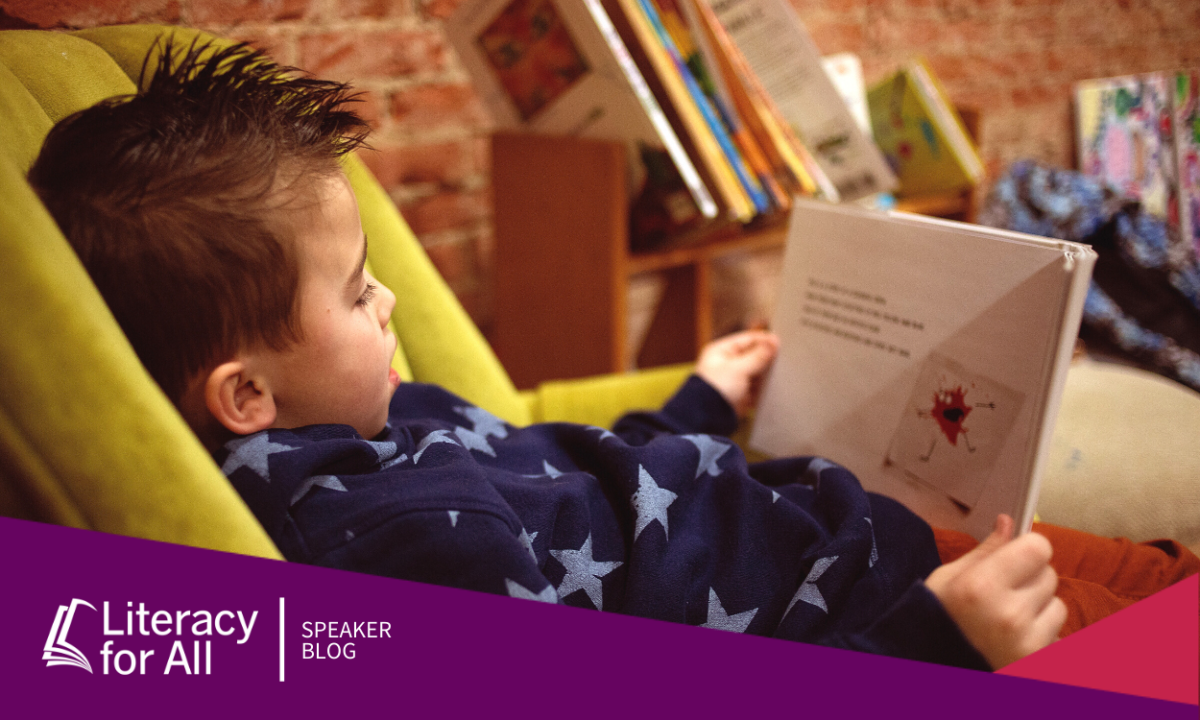A student’s independent literacy time is best spent reading meaningful, easy text. The idea of students doing a task where the output is not tangible or easily measured may be intimidating. How do you know if they are really reading?
Everything a student does should have a purpose. The purpose of independent reading is, of course, reading.
It may feel necessary to rely on worksheets, quizzes, and paperwork to determine if students are doing the work of independent reading. Accountability is the obligation to account for one’s actions. A person must feel responsible for completing a task and for children, increasing engagement and providing meaningful contexts is all you need to instill a sense of accountability. This is especially important for struggling readers. Dr. Richard Allington (2013) asserts that struggling readers are often assigned more worksheets, spend significantly less time reading independently during the day, and are required to do more oral reading during instruction than their average peers. No wonder they are still struggling!
Miller and Moss (2013) cite a study by Reutzel, Fawson, and Smith (2008) that found, “in-school [independent reading] led to gains that were better than national averages in reading rates.” It is clear that allowing equitable amounts of independent reading is critical, but pairing it with the term accountability implies that we expect students to try to “get out of doing the work.” We would like to pose the question, what would happen if we instilled a sense of accountability within our students, rather than holding them accountable ourselves?
Whether we are teaching in person or from a distance, the following are suggestions that will allow you to partake in genuine meaningful conversations about books and learn more about your students as readers. We will outline a few ideas for the major elements of accountability: engagement and meaningful contexts.
Diverse, quality reading materials: First and foremost, reading has to be engaging. If the reading materials are engaging, students will be more likely to read. According to Miller and Moss (2013), classroom libraries are essential, needing from 300-1,000 books for proper diversity and in order to allow for enough choice, which also increases students’ desire to read. Here are a few ideas to gather reading materials:
| In-Person | From a Distance |
| Search your building for long-forgotten boxes of books that have been put into storage. | Organize a traveling library van with your school librarian and staff. |
| Use your school library to periodically rotate different types of reading into your classroom library. | Organize a socially distanced book exchange by appointment. |
| Use book club points. | Set up or provide the locations of Little Free Libraries around the area. |
| Shop garage sales. | Check with your public library to see if they have e-book borrowing. |
| Ask about funding for new books. You may be surprised at the answer. |
Ask students about their thoughts: Meaningful open-ended questions can be as simple as saying, “what did you think about [fill in the blank]?” You can fill in the blank with anything as specific or as abstract as you would like, but the key is to let students know that you truly care about their thoughts. Be careful not to judge the answer. Your questions should not sound like an interrogation or it will seem that your intention is to check the student’s work. Remaining neutral, yet interested, is especially important inspire a child to want to read.
Students ask about each other’s thoughts: Assign students to reading partners or small groups that they stay with over the course of weeks or months. Keeping the students together for an extended period of time allows for the students to build trusting relationships in which they become comfortable speaking with each other. It is important to provide students with modeling of peer to peer conversations and to share interactions that go well with the whole group. Remotely, this can be accomplished in breakout rooms, Google chats, or, by meeting with smaller groups.
When a child just cannot read anymore: Choice builds engagement. If you have been building up your class’s independent reading stamina, you will, of course, have a few students whose stamina does not increase at the same rate as the group. Instead of insisting on more reading which frustrates you and the child, you can address differences in reading stamina by offering other independent choices.
Put together boxes of quiet, hands-on literacy activities that your student can do while others are reading text. The moment you see a student tiring of independent reading, walk over with the box and say, “I see you’re done reading. Remember to mark the page that you want to talk about when we share, and work from your box until independent reading time is finished.” You can set weekly goals with the child to increase reading over time. The box may include:
- A previous cut-up sentence
- Word-making activities from previous phonics lessons
- The child’s writing folder to add writing and/or illustrations
- Magnetic letters to make words that have previously been taught in guided reading lessons
For students who are learning remotely, use “face to face” time to allow for reading conferences and peer discussions about the books they are reading. The actual reading should be done outside of your online time together. This means that you will need more communication with parents regarding how the reading time is going. Parents will need to know more about helping their child choose books and how to structure a daily reading time for their child. The types of boxes mentioned above can be made and provided to parents as they work with your guidance to slowly increase their child’s independent reading stamina.
Setting the stage for engagement and preparing for meaningful conversations will be enough to ensure that students are “doing the work” of independent reading. When we take a respectful approach by assuming the best about our students’ intentions, we will stay true to the purpose of independent reading.
References:
Allington, R.L., What Really Matters When Working With Struggling Readers, The Reading Teacher, Vol. 66 Issue 7 April 2013
Miller, D. & Moss, B. (2013). No More Independent Reading Without Support. N.K. Duke & E.O. Keene (Ed.). Portsmouth, NH: Heinemann.
About the Authors:
Genevieve (Gen) Arcovio is a literacy specialist, trained in Reading Recovery. She has worked in a public school district in upstate New York for 16 years as a literacy interventionist K-5, Reading Recovery teacher, literacy and instructional coach, and a kindergarten teacher. Gen is certified in Literacy, Elementary Education, and Special Education. She is the co-founder of the Literacy Pages blog.
Rhonda Precourt is currently a Reading Recovery teacher and k-2 literacy specialist teaching in upstate New York. In her 20+ years of teaching, she has been a kindergarten teacher, second grade teacher, reading interventionist, and literacy and instructional coach. She is also a National Board Certified teacher and co-founder of the Literacy Pages blog.






